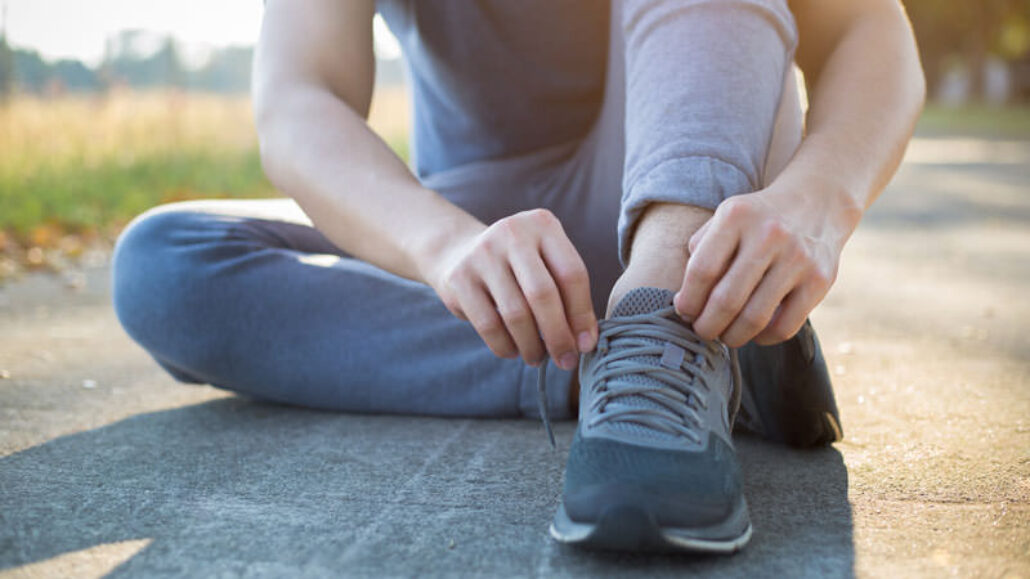With icy conditions on the horizon, Dr. Parisi has suggestions to help prevent wrist fractures caused by falls.
As temperatures and leaves begin to fall, icy winter streets and sidewalks aren’t far behind. We are more likely to slip and fall in slippery conditions, and fall-related injuries can be debilitating. The majority of wrist fractures are caused by falls, and the number of wrist fractures treated rises in colder weather. At Summit, we are committed to providing expert care for fall-related injuries, but we’d prefer to help you prevent them. Upper extremity specialist Dr. Debra Parisi reviews steps anyone can take now to prevent wrist fractures year round.
“Anyone can suffer a wrist fracture during a fall, but people with osteoporosis are particularly vulnerable,” says Dr. Parisi. “The National Institutes of Health tells us that osteoporosis causes 1.5 million bone fractures every year. Wrist, hip, and spinal fractures are the most common.”
Dr. Parisi’s advice to prevent wrist fractures
“There are simple steps we can take to protect our wrists from injury and reduce fall risks,” says Dr. Parisi. “These guidelines were developed for people who embrace proactive prevention. They will also help people who’ve already suffered one wrist fracture and want to avoid a second fall.”
- Keep physically active. “Exercise supports balance, stability, and quick reflexes,” Dr. Parisi explains. “Strong muscles help to protect your bones. Exercise also supports bone strength. Bones are living tissue, and become stronger with activity. The strength-training and yoga classes offered through Summit’s Wellness services are a great option. Our highly trained performance specialists will tailor an exercise program for osteoporotic people concerned about exercising safely.”
- Utilize physical therapy resources. “If you have balance issues or have fallen in the past, I recommend working with a physical therapist,” she advises. “Through Summit, you can get an evaluation to create a personalized program tailored to your needs. With therapy, you can build strong core muscles to catch yourself and avoid a fall.”
- Make smart footwear choices. “You don’t have to give up fashionable shoes to prevent wrist fractures,” Dr. Parisi laughs. “But low heels are safer than stilettos, and rubber soles offer more stability than leather. I know Minnesotans ritually remove their shoes at the door, but you may want to reconsider this habit. Shoes are less slippery than socks or slippers on wood floors and other hard surfaces.”
- When appropriate, use assistive devices. “If balance continues to be a struggle, I encourage the use of a cane or walker,” says Dr. Parisi. “I understand that not everyone wants to use a cane, but remember: your goal is preventing injury. Maybe you feel confident walking unassisted during the summer months. That may be OK, given that most falls happen during winter. When conditions get icy, consider having a cane available. It will help you get to your car and navigate slippery streets and sidewalks more safely.”
- Cultivate a bone-healthy diet. “Good nutrition is a critical part of bone health,” notes Dr. Parisi. “Summit’s dietitian, Amy Lewis, is happy to provide science-based guidance about food choices that support healthy bones.”
Frosty winters are part of life in Minnesota. Dr. Parisi’s tips can help you prevent the spills that go with the season. Following her advice also boosts bone health so you can continue to enjoy the seasonal activities celebrated in the Twin Cities.
Summit Orthopedics provides personalized hand and wrist expertise
The function of our hands is integrated through our wrists and arms to our shoulders; a problem anywhere along our arm may have a significant impact on hand function and quality of life. If you experience an injury or uncomfortable symptoms, our fellowship-trained hand and wrist surgeons are here to help. Summit physicians receive the highest levels of training and exclusively provide individualized care for conditions of the hand, wrist, and elbow.
Start your journey to better function and less pain. Find your hand expert, request an appointment online, or call us at (651) 968–5201 to schedule a consultation.
Summit has convenient locations across the Minneapolis-St. Paul metro area, serving Minnesota and western Wisconsin. We have state-of-the-art centers for comprehensive orthopedic care in Eagan, MN, Plymouth, MN, Vadnais Heights, MN, and Woodbury, MN, as well as additional community clinics throughout the metro and southern Minnesota.
More resources for you
- What is Dupuytren’s Contracture? Can It Be Treated?
- Watch the video: Welcome Debra Parisi, M.D.
- Learn more about winter hazards for hands
- Learn how to wrap your wrist
- Learn more about how to protect your wrists

